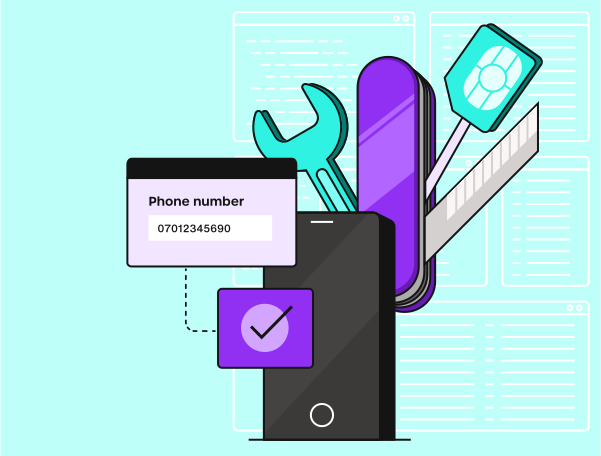Why you need phone validation in your customer data toolkit

For some businesses, capturing a customer’s phone number is an essential piece of onboarding data. For others, it plays a key role in their customer comms strategy. But like any data, a customer’s phone number is only valuable if you know for sure that it’s valid.
In this blog post, we explore the benefits of phone validation and the role it plays in ensuring your customer data has quality and integrity.
What is phone validation?
Phone validation allows you to check that a customer’s phone number is valid, active, and deliverable. It works by delivering a live ‘ping’ to the number the customer has entered at onboarding or checkout stage to see if it really exists and can receive calls or texts.
If there are any inconsistencies – for example there aren’t enough digits, the number isn’t valid, or the number format doesn’t match up with the country the customer has selected – the customer will be asked to try again or enter a different one.
What are the benefits of phone validation?
By quickly validating mobile and landline phone numbers at the point of onboarding, you can have peace of mind that you’re capturing customer data that is real and accurate. And this has several benefits:
Improve account protection and security
As both businesses and individuals become increasingly aware of data protection, two factor authentication (2FA) is an extra layer of security that’s becoming more commonplace.
Most 2FA methods rely on a user providing a password as the first factor. The second commonly includes a text message with a code sent to a user’s smartphone.
Validating customer phone numbers at the point of onboarding is critical to improving account protection effectiveness and customer experience during this process.
Enhance customer communication and conversion
SMS marketing has become one of the most simple and effective customer comms strategies, with 76% of brands planning to invest in text-message marketing in the next year (HubSpot).
And it’s easy to see why. According to research by Simple Texting, the average SMS open rate is 98% and the average SMS marketing campaign conversion rate is 45%.
For many brands, it’s a quick and easy tool for communicating product launches and seasonal sales. But it’s also a valuable customer service tool, allowing you to keep customers updated with their purchase or connect with them during support and service cases.
A number of businesses are also now using text-message marketing to remind customers about their abandoned cart, turning an almost-lost sale into a conversion.
Using phone validation means you have instant access to correct and valid customer phone numbers. So, you can keep customers informed throughout the sales journey, meaning better retention and repeat orders.
Avoid unnecessary costs and wasted effort
By capturing validated phone numbers up-front rather than further down the sales journey, you’re essentially ensuring first-time success when calls are made and SMS messages are sent to customers.
What’s more, conducting a campaign ROI analysis is much easier if you know your targets are active. A much clearer idea of the ratio of response is possible when you have accurate details about how many active phone numbers received your comms, rather than just making an estimate.
Why choose Loqate’s phone validation
The most effective way to capture accurate and valid phone numbers is with a phone validation tool.
With a three-step validation process, our phone validation solution goes beyond checking the length of the number by identifying the country location and carrier, giving you an increased level of security and confidence.
Available through an easy-to-deploy API, it can also be integrated anywhere you need it – on websites, in your apps, epos, CRM and business systems.
And because it’s powered by the most curated location data across the globe, our phone validation tool lets you check the validity of phone numbers for every country in the world.
Phone validation from Loqate
Find out more about our Phone Verification product and how it can power your data.
